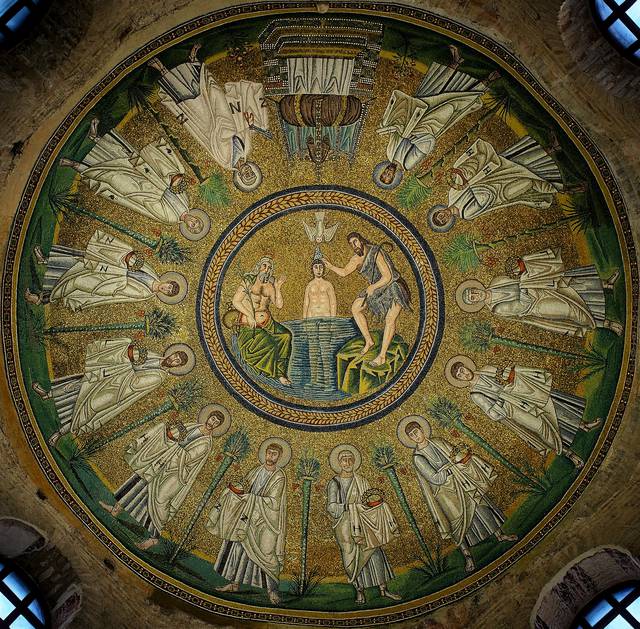

The Arian Baptistry in Ravenna, Italy is a Christian baptismal building that was erected by the Ostrogothic King Theodoric the Great between the end of the 5th century and the beginning of the 6th century A.D., at the same time as the Basilica of Sant' Apollinare Nuovo.
Theodoric was an Arian Christian and decided to let the Goths and the orthodox Chalcedonian Christians live together but separately, and so there were separate neighborhoods and separate religious buildings.
Near his palace, the king commissioned an Arian cathedral, now called the Church of Spirito Santo, but originally named Hagia Anastasis (Holy Resurrection). It was re-consecrated as the Chalcedonian cathedral of Saint Teodoro (soldier and martyr of Amasea in Pontus) in 526 AD. Little remains of the original church after its reconstruction in 1543; some historians speculate that the original mosaics were lost over a thousand years earlier during its Catholic reconstruction due to Arian themes. During this same period, Theodoric also had the baptistry built, today referred to as "of the Arians" in order to distinguish it from the Baptistry of Neon (of the Orthodox) which is about one century older.
